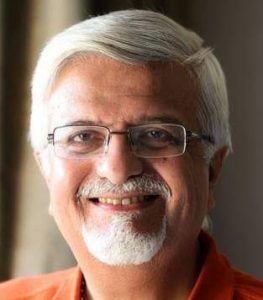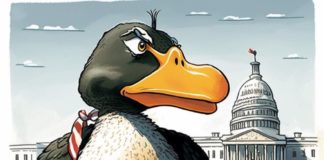By J Mulraj
Jan 24- 30, 2021
Electoral funding and impact on policy
In an interesting article, titled The Great Grift, Scott Galloway, an NYU Stern School Professor, points out that around 400 families provide half the funding for presidential elections, and, in return, can influence policies. These policies result in inequalities. So, for example, Galloway says that the profits made by selling stock in a firm is taxed at a rate lower than the salary of those who work there, although that is not strictly comparable because the gains are made from investing savings from income that has already been taxed. His second point, though, resonates; namely that whilst interest on a second home mortgage is tax deductible, rent paid by tenants is not.
However argued, the result is that the share of wealth, of total wealth, of the top 1% in USA has increased from 24% in 1989 to 31% in 2014. Over the same period the share of the bottom 50% has fallen from 4% to 2%.
Galloway says that of the $ 5 trillion spent for Covid relief, his analysis shows that about $ 1 t. went to help those who genuinely needed aid, $ 1 trillion went for pandemic relief and $3 t. was a transfer to the elites. Hence, the great grift (swindle).
This is borne out by an article in Zero Hedge which claims, based on a study by Institute of Policy studies, that in the 10 month long Covid crisis, the wealth of 660 US billionaires has risen by $ 1.1 t. The increase in money supply has gone into asset price inflation, and, with zero or negative interest rates, largely invested in equity and other assets, like crypto currencies. (Indian authorities have still not clarified if investing in crypto currencies is legally permitted or not, and whether, if permitted, there would be no sudden change as they are wont to do. This is typical of Indian bureaucracy, a reprehensible inability or unwillingness to take a decision).
One should not, however, begrudge increase in wealth created by entrepreneurs. Such as Elon Musk, who is upending several industries such as automobiles, energy and space. Consider how his beautifully designed solar roof tiles (which look infinitely better on a roof than solar panels), can generate solar power, which can be stored in a Power Wall to be used to power the home, as well as the electric car, at times when grid power are high. Thus, the investment in solar tiles, power walls and electric vehicles would pay off in reduced/nil energy cost and transportation costs!
The energy providing system is moving away from fossil fuel based (which harms the environment) have to renewable energy. Solar power generation costs are already, in certain areas, competitive. Yet this would be over time.
However, President Biden/s key focus is on saving the environment, and his policies are tilted towards this. He has taken some steps, via Executive orders, including a moratorium on issuance of new leases, on Federal land, for oil and gas exploration. There is a huge push back against this freezing of leasing of land. One of the states which has been impacted is New Mexico, which, alongwith Texas, houses the Permian basin, the richest supply of oil and gas obtained through fracking. It is such fields that have made the US energy independent. Losing this advantage (renewable supply is not sufficient yet to fill the shortfall resulting from such a closure) is unbelievable.
As is the decision to stop the Keystone XL Pipeline to transport Canadian crude from Canada to USA is also inexplicable, not only because transporting it via a pipeline already built is, commonsensically, more friendly to the environment than transporting it by rail or gas guzzling trucks, but, equally importantly because it destroys some 11,000 high paying jobs as well as harms the relationship with the largest neighbour.
Geopolitically, too, these decisions are bizarre. Not being dependent on crude oil from the Middle East gave USA the elbow room to deal with a sensitive region. It also enabled the US to facilitate the signing of peace accords between Israel and a host of Middle Eastern and other countries, including UAE, Bahrain, Sudan and Morocco. Biden has also frozen sale of F 35s to Saudi Arabia and UAE. These planes were badly needed by UAE, to ward off threats from Iran, and which the peace treaty with Israel helped facilitate. Israel was earlier objecting to it.
Biden is also seeking to re-enter the JCPOA treaty with Iran, a move that has riled Saudi Arabia, Israel and UAE. So the geopolitical situation has altered considerably due to the likely loss of energy independence (after moratorium on leases for oil/gas drilling on Federal land, and due to the other factors mentioned.
This makes the Middle East region as a potential hot spot. The other hot spot is the South China Sea, where China is flexing its military muscle. It has authorised its patrol boats to open fire against any vessel, and this creates a tinder box for a conflict.
Technology is making the future exciting as well. This video beautifully explains how US can make an efficient electric grid with renewable energy. Technology now permits the system to not only control supply (currently, power stations adjust supply to match demand, by reducing or increasing production) but also demand. There are intermediaries which ask consumers to voluntarily allow them control of their home energy system to enable they to reduce consumption, when demand is high. This is done seamlessly, with the consumer not knowing about it! So, e.g. the temperature of ACs or refrigerators, or other high consumption items, is adjusted by the intermediary, in a small way not noticeable by the consumer, and thus reduce demand, and, with it, electricity bills.
Compare this with the slothful way in which BEST, which supplies electricity to part of Mumbai, is behaving. It still continues to bill its consumers on an ‘assumed’ basis, using COVID as an excuse for not getting actual readings! Other utility suppliers do not have a shortage of staff to do actual readings; one wonders why BEST is so special.
The Economic Survey indicates a V-shaped economic recovery, forecasting an 11% GDP growth (after the 2020 fall due to Covid). The IMF forecasts India to grow at 11.5%. The likely fiscal deficit will be known on Monday when the Union Budget will be presented, but will be higher than the 3.5% targeted. Rating agencies may use this to alter India’s ratings, even though other countries with a much poorer outlook at rated higher, indicating a likely bias in their ratings.
Rating agencies have got it wrong often enough. Most noticeably in the 2008 global financial crisis, when they had given higher than deserved ratings to several instruments, which allowed banks to offload the risks of sub-prime loans to retail investors who relied on these ratings. An article in the Economist revealed that Moody’s for example, had downgraded its own ratings of Alt-A sub prime loans from Triple A to junk, in one downgrade (this is rare, because ratings change one notch at a time).
The sensex dropped 5.3% to end the week at 46,285. It is good that the fall occurred prior to the Budget, indicating less expectations for an encouraging budget. The Finance Minister has no elbow room for give aways. A further fall, should it occur, might be a good opportunity to enter, because globally, the global wealth is huge, at some $ 360 trillion according to Credit Suisse.
Picture source: nicepng.com











































COMMENTS